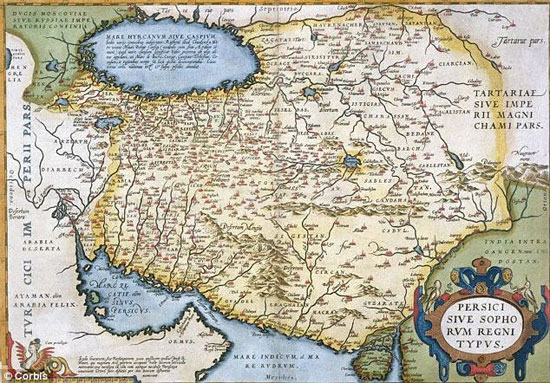The secret of the medieval thief group
A medieval and highly organized Islamic super thief group has used special and slightly unusual tools to break into "dirty" houses, a new study reveals.
The infamous Muslim medieval "thief" group, with a wide range of activities, stretches from Spain to the Chinese border, named Banu Sasan . This is an organization that gathers lethargic people, criminals, and wandering poets with talents to "chase walls and daring " chaos.
They broke into houses using a kit that included a crowbar, a candle, rancid bread, dried beans, an iron nail, a drill, a cloth covered with cloth. On one end, a bag of sand and an important turtle.

Medieval PersianX(including the Iranian plateau and the surrounding area) is considered to be the hometown of the Banu Sasan super thief group.(Photo: Corbis)
Smithsonian magazine cited a study by British historian Clifford Bosworth, who said that Banu Sasan thieves often took action at night after digging a tunnel into the victim's home. They often use iron nails or iron hooks to perforate a wall of the house. Even so, it would be better if they found it by the main door, they would use crowbar instead.
Once the hole is large enough to get through, the thieves will stick a stick with a cloth covered over the hole to prevent being attacked. The main stick is the weapon that helps the "thief" name to defend, avoid being injured in case someone finds out the break-in and use a sword or a hammer to click the person through the hole.
When they know it is safe to enter a victim's home, thieves will use their special tool: the turtle. Professor Bosworth described the animal's role as follows: "The thief always carries with him a flint and a small candle with his little finger. He will light the candle and attach it to the tortoise's shell. Turtle then it was brought through the wall into the house and crawled slowly and here, illuminating the house and furniture inside. "
Next, the thief will bring sand bags to check the owners sleeping in the house. He will throw sandboxes if someone alarms the intruder.
According to Professor Bosworth, the thief can chew some rancid bread with dried peas to fake the sound of a cat eating rats in order not to shock any sleeping master.
Despite the above knowledge, most of the information about Banu Sasan's thief group is still speculative. This is because there are very few documents that provide insights into the Islamic underworld.

Street scene in a medieval Middle Eastern town.(Photo: Smithsonian)
Most Arabic texts are written by the authors in cities and serve the wishes of their patrons. There are still many uncertainties, such as how the name of the Banu Sasan group was born.
The remaining documents mentioned two incompatible explanations. According to the first explanation, Muslim criminals are considered as servants or servants of Sheikh Sasan, a Persian prince who was robbed of a throne and had to live wandering "now, tomorrow".
The second explanation is that the name Banu Sasan comes from "Sasanid" , the name of the ancient reign of Persia that was destroyed by the Arabs in the middle of the 7th century. The rule of the invaders Foreignity has pushed many Persians into the path of homeless and beggars, forcing them to live out of the law.
Now researchers and experts have no way of determining whether any of the above hypotheses are true or not. However, there is a fact that Banu Sasan organization has existed for six centuries, everywhere, from Spain to the Chinese border.
Possessing sophisticated thieving skills and using slang, Banu Sasan thieves created a contrast with the flourishing period of Islam. When they do not break into the "dirty" houses, they present themselves as ascetics or Muslim mystical characters.
- Decipher the secret room of medieval priests
- Discover the harsh medieval life
- Napoleon of super thieves and turbulent life
- Secretly discovered in the medieval castle
- Stealthy thanks to new technology
- The secret of longevity of the Temple knights
- Video: Building a medieval castle by technique from a hundred years ago, right in this 21st century
- The horrifying life of the Medieval Knight
- Mysterious words on the 800-year-old ancient sword
- Discover mysterious medieval mummies in the bark
- The Chinese maiden was cremated because she suspected of being a witch
- Detecting medieval skulls
 'Fine laughs' - Scary and painful torture in ancient times
'Fine laughs' - Scary and painful torture in ancient times The sequence of numbers 142857 of the Egyptian pyramids is known as the strangest number in the world - Why?
The sequence of numbers 142857 of the Egyptian pyramids is known as the strangest number in the world - Why? History of the iron
History of the iron What is alum?
What is alum?